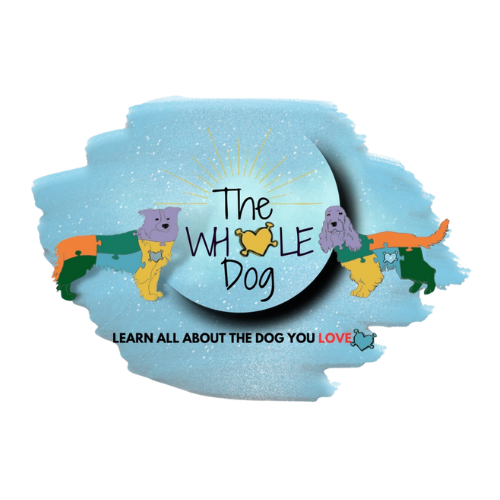

HOOHOO BIG SUMMER BLOWOUT!
HOO HOO BIG SUMMER BLOWOUT!
Here comes the FLOOF!!
We don’t know about you but we celebrate our animals beginning to blow their winter coats!
It means SUMMER is on the horizon!
However when it starts to take over your house it isn't the most fun!
Finding tumbleweeds everywhere! Everything your dog touches gets redecorated with hair!
You're eating it! You're covered in it! You might even think you could make yourself a whole new dog out of it!...

Not all breeds of dogs will shed a lot of hair, some it's very minimal where others it’s a fur-nado especially for our double coated friends like German Shepherds, Golden Retrievers and Pomeranian's.
Shedding is controlled by hormonal changes that are affected by changes in daylight.
When the days start to get longer and the temperature climbs up mother nature says it’s time to let that floof fly as our dogs ditch their winter woolies in favour of their summer get up, because the winter coat is much thicker, there will be much more fur released in the spring.
It’s important to know your own individual breeds grooming requirements so that you are armed with the right tools to tackle the changes. For example a Poodle's needs will be VERY different from an Alaskan Malamute.
If you’re unsure a Professional Groomer is definitely the place to go to ask the questions!
So we did just that!
We spoke to Ryan Chynoweth from Dogs By Ry based out of Snip’n’Clip Dog Grooming in Ayr
for his top tips to survive the shedding season!

Here’s what he had to say…
Fighting Floof- 5 tips to minimise your dog’s shedding.
As a dog owner, dealing with shedding is a constant battle! It get’s on your clothes, your furniture and everywhere in between! Regardless what anybody says, all dogs shed. Yes, even doodle breeds or “hypo-allergenic breeds” despite what their breeders say. So, it is our responsibility as dog owners to keep on top of the shedding, and maintain our dogs skin and coat health.
Tip 1- Brush regularly
Brushing your dog will pull out all of the dead undercoat that builds up underneath their top coat. And for those dogs that are single coated, it will pull out any dead hairs that they no longer need. All dogs need brushed regularly! Additionally, brushing stimulates the skin and promotes circulation which can lead to a healthier coat for your dog.
Tip 2- Use the RIGHT brush
Recently, I had a client with a matted Cockapoo tell me they brush their dog everyday. I asked them, “what brush do you use?” And their reply…. “A Furminator”… This is the completely wrong brush to use for this kind of dog, and that was why her dog was matted. Furthermore, if she continued to use a furminator on this dog, she could have severely damaged the dog’s coat. Therefore, it’s important to use the right brush for the job! For most long haired dogs, a slicker brush is what you’re wanting to use, but for short haired double coated dogs like a Labrador, a curry brush is ideal. There are so many different coat types that need different types of brushes, if you’re unsure please reach out and ask!
Tip 3: bath your dog regularly.
All dogs go through a 3 week skin cycle, where every 3 weeks their old coat is replaced with a new coat. This old coat can get stuck under the new coat and can cause build up which will lead to matting and can potentially lead to skin disorders. Bathing your dog can loosen any old coat from the skin, as well as clean the skin ensuring infections don’t occur. Remember and use a high quality shampoo AND conditioner! A brushing session after a bath is also going to really help take all the dead coat out!
Tip 4- regular professional grooming.
Every dog, regardless of the breed, should see a professional groomer every 6-12 weeks depending on the breed and coat. For some dogs their grooming can be done easily at home, but it still needs done regularly. Groomers have the skill, experience, tools and equipment needed to tackle shedding on all coat types, and make sure you have a cleaner, happier dog.
Tip 5- Provide a balanced diet and use supplements if necessary
A healthy diet plays a crucial role in maintaining your dogs skin and coat health which in turn can minimise shedding. Ensure your dog receives a balanced diet, rich in essential nutrients, especially Omega 3, to ensure their skin and coat is as healthy as possible. Supplements, such as salmon oil, are a great way of adding Omega 3 into your dogs diet, and this helps with other aspects of their health as well.
Shedding is a natural part of a dogs skin and coat cycle, and it’s never something you are going to be able to fully get rid of. But with the right strategies, and these top 5 tips, your dog will be healthier, cleaner and their shedding will be kept to a minimum, leaving them feeling and looking their best all year round.”
Im sure you'll agree those tips are super helpful!
We wish you well in fighting the floof but if you'd like to do it with the help of a professional Ryan is your guy!
You can find his Facebook Page here...


